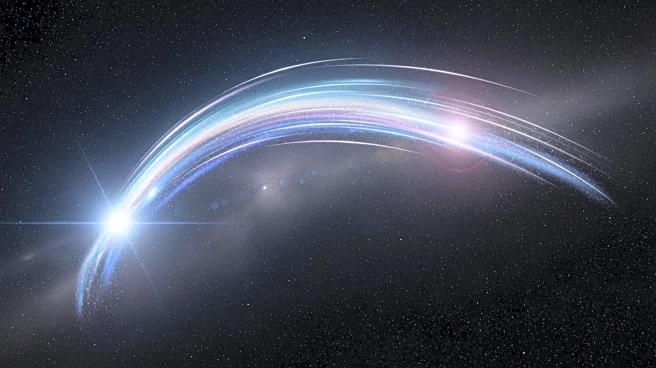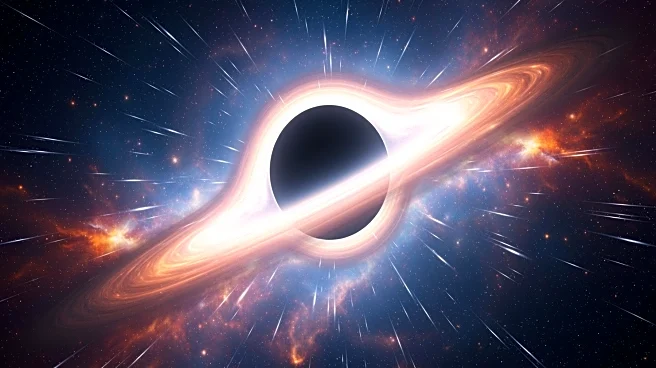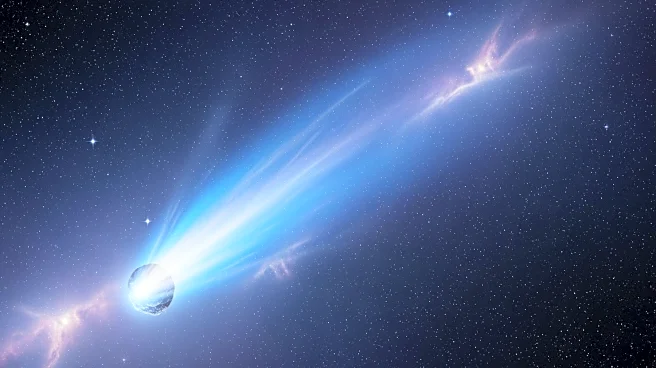What's Happening?
The Vera C. Rubin Observatory has captured its first image revealing a significant stellar stream emanating from the barred spiral galaxy Messier 61 (M61), located 55 million light-years away in the Virgo constellation. This discovery was made possible
due to the observatory's sensitivity to low surface brightness objects. The stream, stretching approximately 163,000 light-years, is thought to be the remnants of a dwarf galaxy disrupted by M61's gravitational forces. This event may have triggered a starburst in M61 around 10 million years ago. The finding is reminiscent of the Sagittarius Stream around the Milky Way, suggesting that large galaxies often grow by absorbing smaller ones.
Why It's Important?
This discovery is significant as it provides insights into the formation and evolution of galaxies. The ability of the Vera C. Rubin Observatory to detect such faint structures could lead to a better understanding of how galaxies like the Milky Way have developed over time. The revelation of such streams supports the theory that large galaxies expand by merging with smaller ones, which could reshape current models of galactic evolution. This finding also highlights the potential of the Rubin Observatory to uncover more hidden structures in the universe, offering a new perspective on cosmic history.
What's Next?
The Vera C. Rubin Observatory is set to begin its 10-year Legacy Survey of Space and Time mission, which will create a comprehensive time-lapse record of the universe. This mission is expected to uncover more substructures around other galaxies, enhancing our understanding of galactic dynamics and evolution. The data collected could lead to further discoveries about the processes that shape galaxies, potentially influencing future astronomical research and theories.













